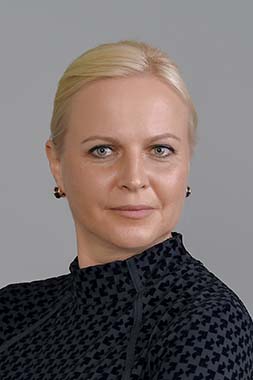Speaker Details

Daria ANDREEVA-BAEUMLER
Ionic channels in artificial membranes for healthcare applications
While highly selective and permeable ionic channels are key transport pathways in biological membranes, achieving similar efficiency in artificial membranes remains a considerable challenge in membrane science and technology. In our pursuit of achieving high efficiency in water and ionic transport within artificial materials, we have developed a technology combining graphene-family 2D materials and macromolecules, particularly polyelectrolytes. Our recent research involves the creation of 2D membranes using graphene-oxide and synthetic polyamines, chitosan, and cellulose derivatives, forming a network of ionic channels. These membranes demonstrate regulated permeability for water and ions, akin to biological membranes [1, 2]. They showcase functionalities such as pH-induced release/uptake quantum dosing for biodetection [3], regulated ionic transport for sustainable anticorrosion [4], and various other bio-inspired features [5]. Artificial membranes endowed with inherent intelligence do not only mimic cellular functions but also have fundamental implications across diverse scientific and technological domains. They find extensive applications in healthcare and biomedical fields, including drug delivery systems, bionic devices, and biosensors.
Reference
[1] D. V. Andreeva, et al., Nature Nanotechnology, 16, 174 (2021)
[2] K. Yang, et al., Advanced Functional Materials, 32, 2201904 (2022)
[3] K. Yang, et al., Nanoscale Horizons, 8, 1243 (2023)
[4] K. Yang, et al., PNAS, 120, e2307618120 (2023)
[5] M. Chen, et al., Materials & Design, 233, 112205 (2023)